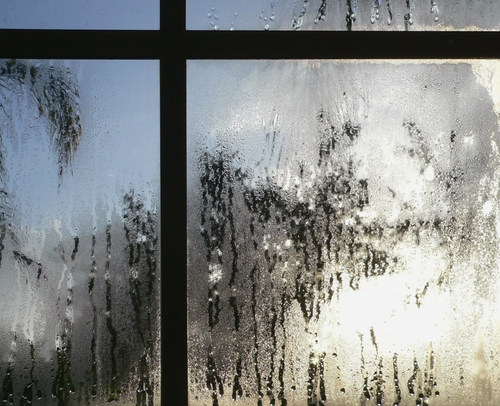Condensation on Windows – how does it happen?
Sealed window units are normally exposed to high temperatures in the Summer months and freezing cold conditions in the Winter, the external temperature has an impact on the double glazing windows. Solar pumping is the main cause of condensation on windows and is prolific on south facing elevations where the windows are exposed to high temperatures.
The high Summer temperatures causes the air trapped between the two panes of glass to expand causing the centre of the window unit to swell like a balloon. As the temperature drops the air contracts and the window unit goes into negative deflection causing the glass to contract in the middle. This constant expansion and contraction is called solar pumping. the stress this causes on the perimeter seal eventually causes the window seal to fail.
When the window seal has failed moisture is drawn into the window unit when the temperature drops, and is expelled from the window unit as the temperature rises. This daily transfer of air quickly saturates the desiccant crystals inside the spacer bars and moisture condensing on the window glass is inevitable.
Moisture/Humidity trapped in the sealed window unit turns into steam that rises to the top of the window.
As the temperature drops, the steam condenses on the cooler glass surface and runs down the glass and accumulates on the bottom spacer ready to be turned back into steam again when the temperature rises.
The daily cycle draws minerals from the crystals and spacer bar that leaves deposits on the glass that can’t always be removed. Staining and streaking on the glass is physical damage and that can’t be removed.
Other causes of condensation on windows are:
- Incorrect fitting
- Poor manufacturing
- Holes in the seals
- Poor transportation
- Poor framework maintenance
- Failed or blocked drainage system



